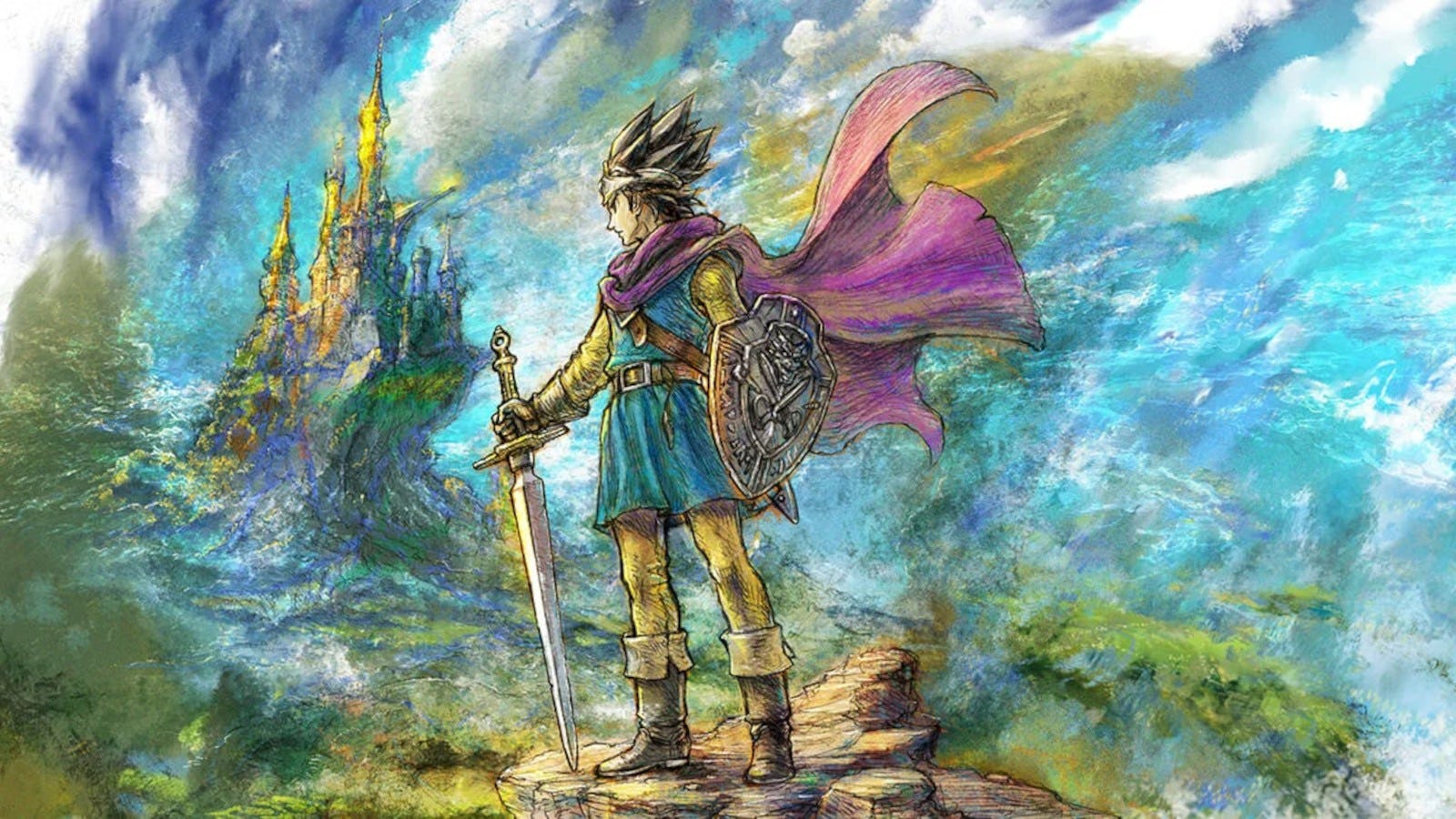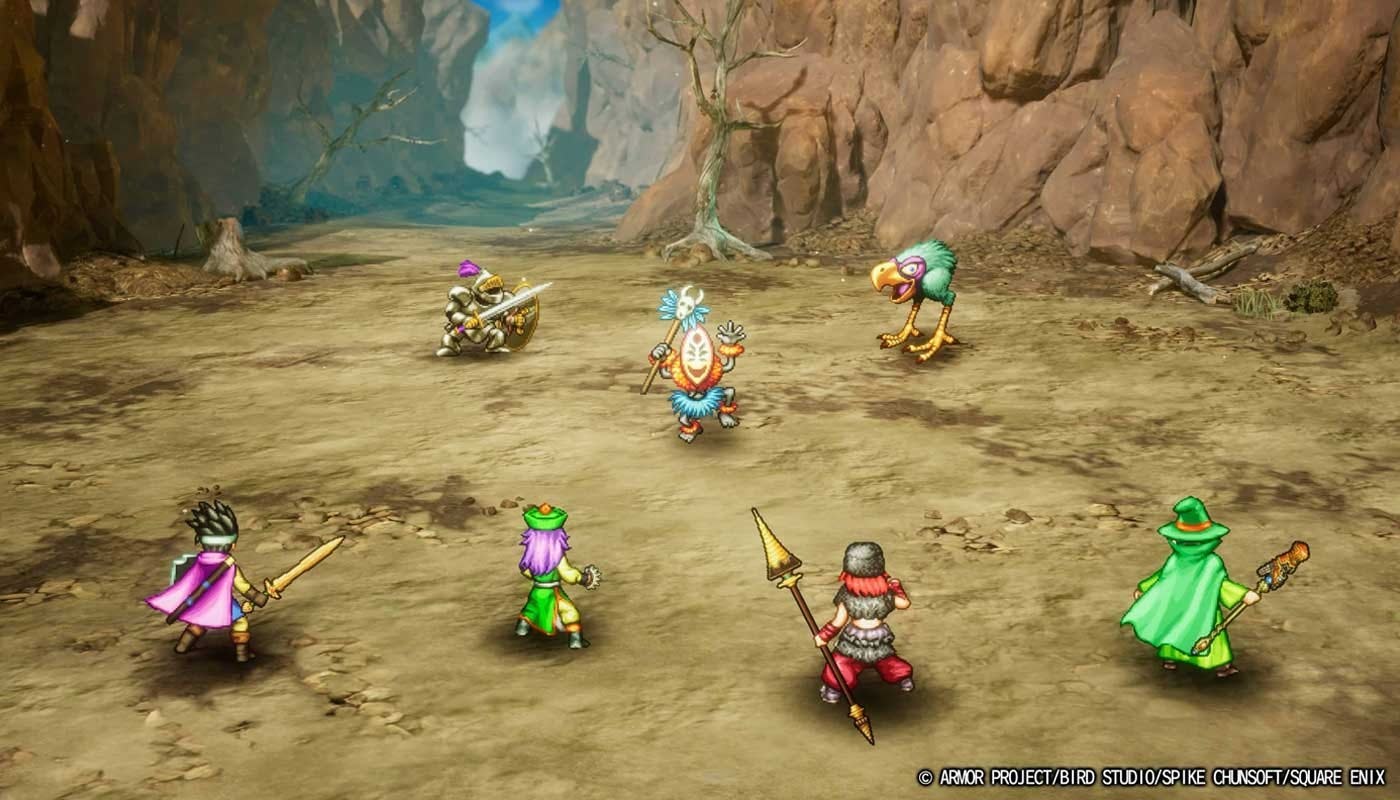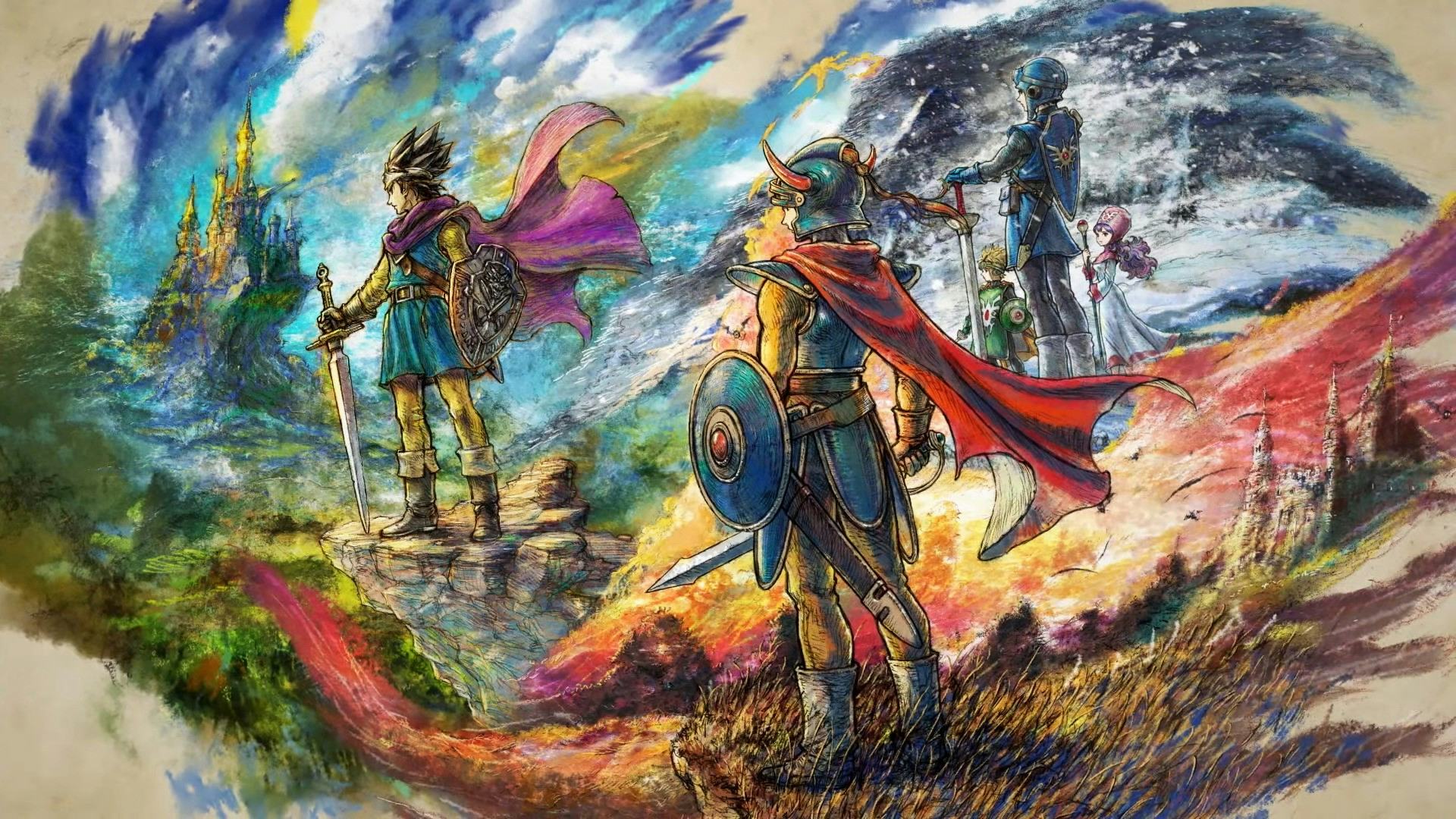
In 2018, Square Enix released Octopath Traveler and discovered a winning formula – the utterly gorgeous art style dubbed “HD-2D.” Blending modern visual improvements with a nostalgic sprite-based style has given Square Enix’s games a wholly unique style that has turned out to be incredibly popular with fans. But the Dragon Quest 3 remake represents the next step for HD-2D, applying that style to a beloved classic game, and the results are just as astounding as what’s come before. It also opens up a wealth of questions on what other games Square Enix could remake in this style, and Dragon Quest 3 HD-2D Remake producer Masaaki Hayasaka has one, in particular, that he’d like to see.
“It’s not that we have concrete plans for this, but personally I would have to say Final Fantasy VI,” Hayasaka tells Inverse, “Octopath Traveler—the first HD-2D title—was developed while referencing FFVI, as it had the highest quality pixel art. I would love to see how the game we referenced would look with the HD-2D art style.”
But adapting a game into the HD-2D style isn’t such a simple task, as Hayasaka thinks working with the style requires a “higher sense of artistic sensibility.” That’s doubly true when you’re not just making something new, but adapting a game that has an already pre-established look and feel.
With the release of Dragon Quest 3 HD-2D, Inverse had the chance to talk to Hayasaka about the difficulties and potential of HD-2D games, and why now was the right time for a remake.

After all these years, why is now the right time to remake Dragon Quest 3? Had a remake ever been considered before this project?
Hayasaka: Since the “HD-2D” graphic expression was created with Octopath Traveler and became accepted by many people, an idea to remake Dragon Quest 3 in HD-2D was brought up within our company.
The HD-2D graphics were the most suitable art style for remaking the Erdrick trilogy, which are the earliest titles within the Dragon Quest series. Now that this art style is born, we felt it was the perfect timing for a remake.
A big point with this remake is giving players a new starting point to jump into the series. Looking to the future of Dragon Quest, how important do you think having a new starting point is?
Hayasaka: Rejuvenating the user base is a challenge that accompanies any title within an IP with a longstanding history. Dragon Quest is no exception. To put it bluntly, if we’re unable to rejuvenate the users, the IP will undoubtedly disappear. In that sense, we were conscious of the fact that this remake of the Edrick trilogy would be a good entry point to attract a new user base, and we believe doing so is very important for this IP.

What was it like updating Dragon Quest 3 into the HD-2D engine and style? Were there any difficulties you ran into? How much work did rebuilding the game’s world entail?
Hayasaka: The quickest way to explain this is by comparing the first teaser we released three years ago against the latest trailer. I’m sure you will find everything to be different, from the map size to the characters’ body proportions. We get asked why things took so long since the first announcement, but the fact that we needed this much time speaks to how intensely involved the process of applying HD-2D graphics to Dragon Quest 3 truly was.
Some say that because HD-2D is pixel-based and this game is a remake, it should be easier to produce, but that is far from the truth! In my opinion, this style requires a higher level of artistic sensibility, and a remake faces more project-level limitations compared to a brand-new title, making the difficulty extremely high. After all, the expectations from the fans of the original game are a monumental hurdle we must work hard to meet.
This remake adds some new jobs and story content. Did you ever consider adding even more than what’s there? Was there anything that didn’t make the cut? And can we expect similar changes for DQ I-II?
Hayasaka: We did not cut much from the game. One thing we did cut was a feature that animated party members with jittered movement during battle sequences. After assessing this idea against the overall character design process, we reached the conclusion that the production bandwidth required for the pixel art would be too enormous, and gave up on it.
Other than that, we were able to put in everything we could think of. I still cannot share any information about Dragon Quest I & II, but we are diligently working on the remake, so please look forward to it.

Did the success of Dragon Quest XI influence this remake in any way? Did you look at how DQXI changed and updated the series’ style and gameplay for reference?
Hayasaka: We have many people who became new Dragon Quest players through Dragon Quest XI, and above all, that game featured lore connections to the Erdrick trilogy, so it was incredibly influential. Even in terms of gameplay accessibility, because Dragon Quest XI is the latest mainline title in the series, we referenced many elements like its UI for maps and text displays.
This was the first Dragon Quest title for Team Asano, and there were many things we didn’t know when it came to Dragon Quest’s development approach, so considerable research went into past titles, including Dragon Quest XI.
With Live a Live and now Dragon Quest 3, are there any other classic Square RPGs that you’d like to see get similarly remade? Why do you think the HD-2D style works so well for remakes?
Hayasaka: It’s not that we have concrete plans for this, but personally I would have to say Final Fantasy VI. Octopath Traveler—the first HD-2D title—was developed while referencing FFVI, as it had the highest quality pixel art. I would love to see how the game we referenced would look with the HD-2D art style.
Because this art style itself was created while referencing such titles, it’s highly compatible with games originally made using pixel art. This compatibility is probably why people feel this style is a match made in heaven with these types of remakes.
Dragon Quest 3 HD-2D Remake is available on PS5, Xbox Series X|S, Nintendo Switch, and PC.







